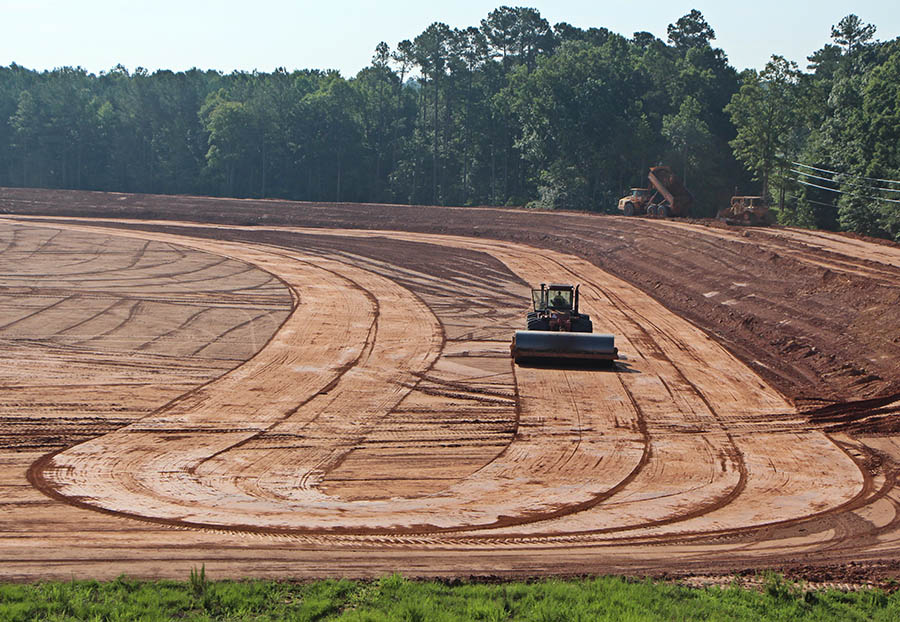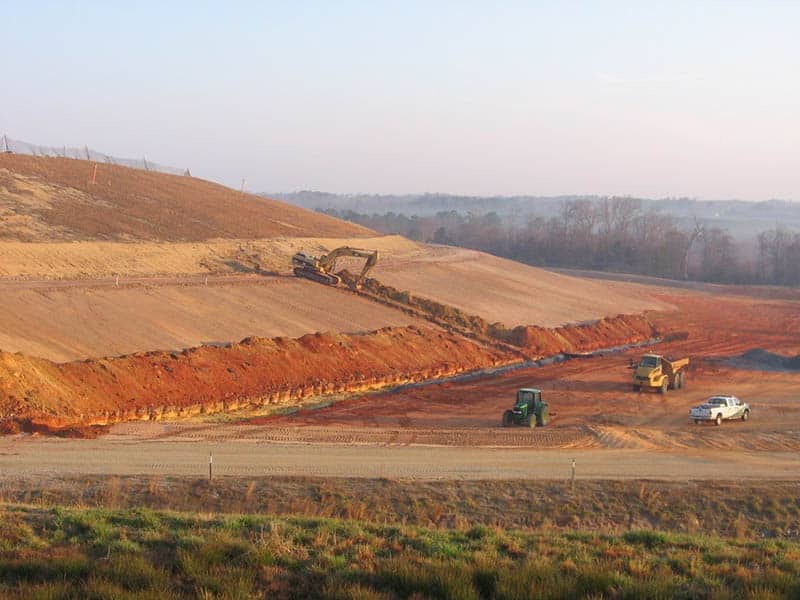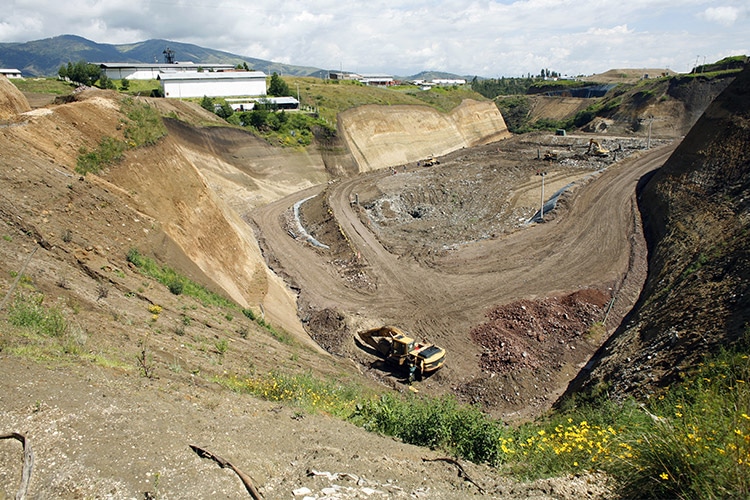Stacey Smith didn’t plan on building a lifelong career working with landfill cover—literally, what goes on top of all that waste. “I would probably say I fell into it,” says Smith, president of the prominent North Carolina engineering firm Smith Gardner and member of the North Carolina Professional Engineering Board. Smith has been involved in the use of geosynthetic materials in cover design since working as the right-hand man of his mentor Greg Richardson in the early 1990s. When Smith got into the industry, the American recycling and waste system was in the midst of a transition from unlined to lined landfills (to prevent toxic materials from leeching into the soil), thanks to a new era of legislation that changed the way Americans think about and process the excesses of our consumption. “It was a time of a lot of change,” says Smith, “and the industry was different from what I had worked on.”

Smith says that one of the most rewarding aspects of working with waste processing and containment is the rapid evolution of science and legislation around the treatment of both consumer waste and the by-products of industrial activity. “It’s been so fascinating over the past several decades to see how we’ve evolved in the use of containment systems and how we remove waste or contain it,” says Smith. “When I started, we were very compartmental in the way we designed systems. But over time we’ve had to take responsibility for more of the containment design, learning how to manage liquid, landfill gas collection, trying to close and zip up the side with other geosynthetic materials. We’ve developed a master plan approach, looking at what the whole site looks like versus looking specifically at all the components.”
A critical component of designing this more comprehensive approach to waste management and containment is the use of digital imaging technologies and software. “We’ve seen 3D modeling technology evolve over the years,” says Smith, “And whenever we’re evaluating volume of waste materials or earthwork in trying to better optimize a site, that technology has become integral to what we do. I used to do cross sections by hand, which would take several days. With technology we’re able to do that work in half an hour.” Aside from the obvious benefits of saved time, digital technology has helped Smith and his colleagues present a more integrated approach to new designs, using software like Bluebeam Revu in order to track and communicate about projects across teams. “We’re able to display our designs in several types of illustrations, like gradients or layer models,” says Smith. “We do a lot of modeling to make sure we get the most out of an area. Our guys like Bluebeam software for its ability to bridge or extend our work, measuring areas or lengths and tracking projects.”

But for Smith, changes in the industry’s understanding of the nature of waste, reimagining potential new streams of storage, and reuse, are even more critical than developments in the underlying technology that supports landfill cover design. “Every year we advance our knowledge of potential contaminants within the world and then identity and mitigate their impact,” says Smith. “The most exciting work we do is trying to help our clients and the regulatory community discover how to apply the volumes of regulatory language that we have to navigate. What makes sense? What works the best? How can we do the best thing for the public and the environment? Every few years there’s a new topic and new things that we learn, and we try to put systems in place that can remediate issues as they arise.”
Waste processing is very much an economic issue. And with global market realities leading to a cessation in much of the international recycling markets the American waste community depended on, Smith says that now is the time to consider reuse and repurposing of waste as an increasingly critical issue. “I’m interested in how we can take advantage of the economy to recover waste that can be used in a different way,” says Smith, noting that reuse of waste products is central to his company’s practice. “Every time we’ve had an opportunity to pull out a waste stream and give a product a new use, we try it. If you assume that waste can still be a resource, you’ll think about it in an entirely different way. We’re continuing to find ways to streamline the process.”











